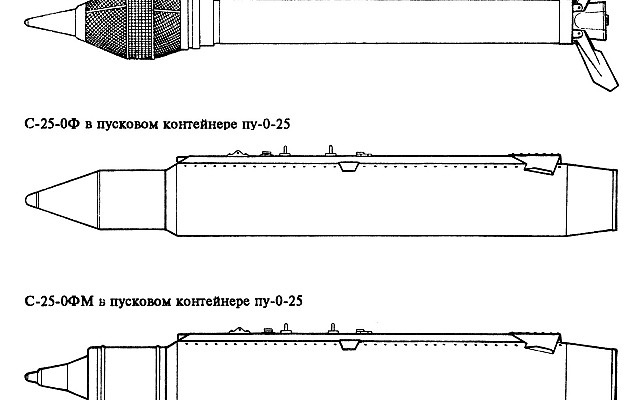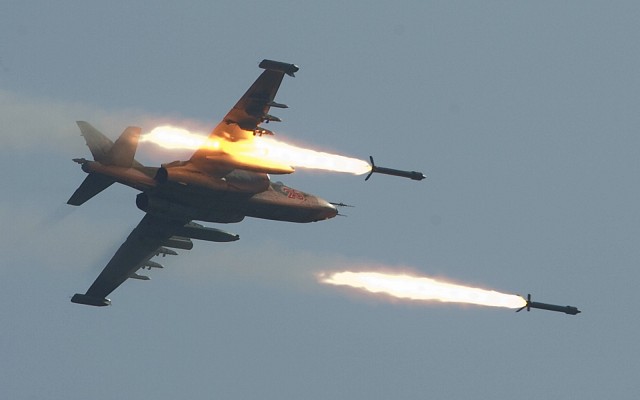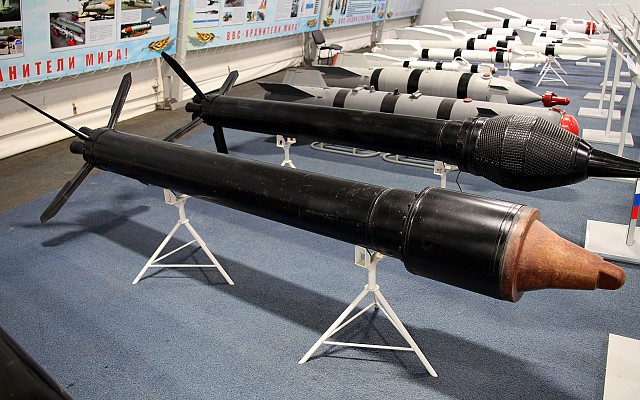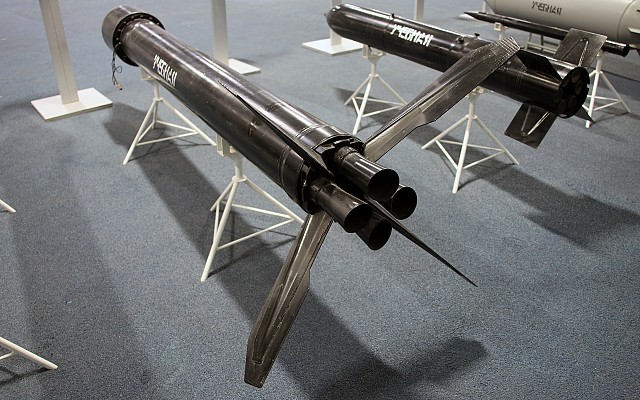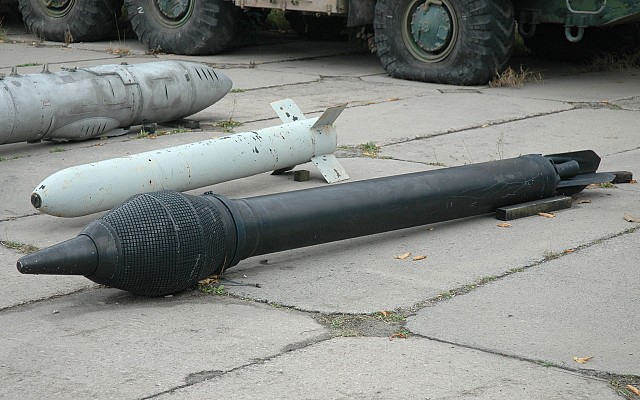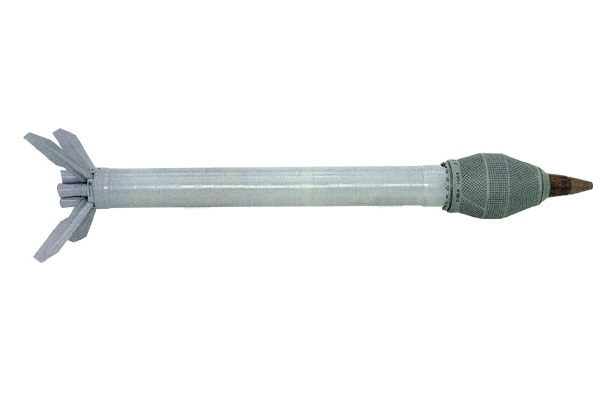266mm S-25
Overview
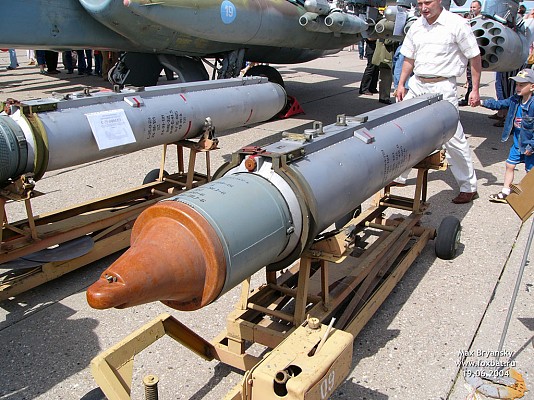
S-25-OFM
S-25-OFM aerial rocket with penetrating warhead in O-25 launch tube.
Source: Max Bryansky -
© Copyright lies with original owner
1971 (flight tests)
1974 (Soviet state trials)
V. Baranov (chief engineer)
Russia - Bryansk chemical plant
Description
Introduction
The S-25 is a series of unguided aerial rockets of Soviet origin. The S-25 series is the largest type of unguided aerial rocket ever adopted for service in Soviet Union and Russian service. A laser guided variant, the S-25L, was developed and is described separately.
Design
The S-25 was intended as a more capable alternative to the S-24. This was to be achieved by a heavier warhead, using warhead types for a dedicated purpose and increased accuracy. The latter was achieved by using a folding fin design akin to the much smaller S-5. The oversize warhead is located at the front. The single stage solid propellant rocket motor has four nozzles. Together with the four folding tail fins these stabilize the rocket in flight. The resulting accuracy was deemed sufficient to engage larger targets up to 3 km away. Smaller targets, such as individual bunkers, require the aircraft to come in close. For increased hit ratio and standoff range a laser guided variant of the S-25 was developed.
Launch tube
The folding fin design requires the use of a launch tube. The O-25 launch tube is made of wood and aluminum. Due to the size of the rocket only a single S-25 rocket is carried per O-25. The oversize warhead extends from the pod. The O-25 features lug spacing for suspension on all regular underwing and fuselage hardpoints. The weight and backblast upon launch determine the exact hardpoints on which the S-25 be used in practice.
Firepower
The S-25 aerial rockets are the largest in service and their firepower is devastating. Whether S-25 rockets or aerial bombs of similar weight are more effective can be debated. The S-25-O is capable of effectively engaging troop concentrations and soft skin targets. Tests indicate that trucks and parked aircraft within the fragmentation radius are completely disabled. The S-25-OFM can be used against runways, aircraft shelters and concrete structures. When used against runways these create craters of about 3 meters deep.
Launch platforms
All variants of the S-25 are launched from the O-25 launch tube. The O-25 holds a single missile and has lugs for suspension on the launch aircraft. Most trials were conducted using the Su-17M series of ground attack aircraft. In practice the S-25 series is mostly seen on the Su-25 series ground attack aircraft. The Su-24, Su-24M and Su-34 strike aircraft can also launch the S-25. Alternatively, the Su-27, Su-30 and Su-35S multirole fighter aircraft can be equipped with S-25.
Users
The S-25 series is in use with Russia. Although formally adopted in 1975, it seems that use on a wider scale started only in the late 1980's or early 1990's. However, the S-25 remains a niche weapon and is not frequently seen in use. The S-25 is available for export and is possibly in use with nations that have acquired Soviet/Russian aircraft.
Variants
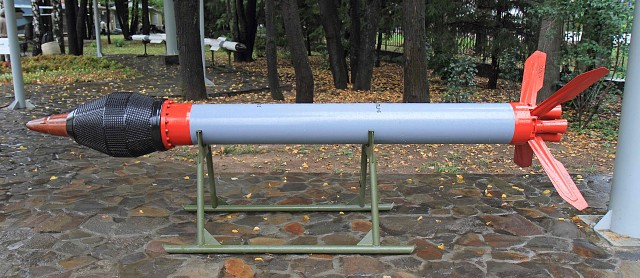
S-25-O
High explosive fragmentation version, introduced in 1975. The version features the distinctive pre-fragmented oversize warhead. It is intended to be used against infantry and soft skin vehicles in the open. The warhead produced over 9.000 fragments, of which about 6.500 are in the 2 to 20 gram range. An airburst fuse is located in the nose for maximum effect over a wider area.
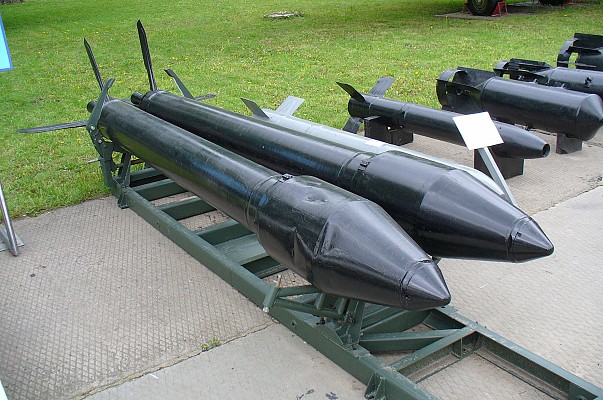
S-25-OF
Variant for use against hardened targets. Introduced in 1975 alongside S-25-O. Can be identified by its cylindrical oversize warhead with pointed nose. This version is intended for use against aircraft shelters, runways, command posts and field fortifications. This model features an impact fuse. The nose mounted impact fuse proved to have a major drawback. Upon hitting a target that proves too solid the missile disintegrates without exploding. The OF was superseded by the OFM model.
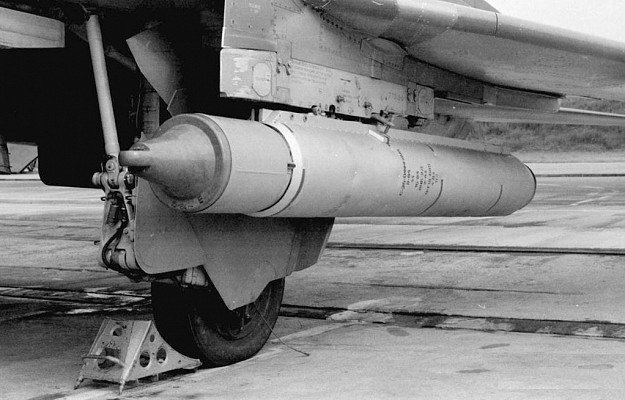
S-25-OFM
Version with penetrating warhead and delayed impact fuse. Introduced in the late 1970's. Looks similar to S-25-OF, but has a more pointed nose. The warhead is lighter and is filled with less explosive. The resulting increase in airspeed aids penetration of concrete structures. The OFM model has mostly superseded the earlier OF since it can engage a wider range of targets with similar effectiveness.
Details
Media
Related articles
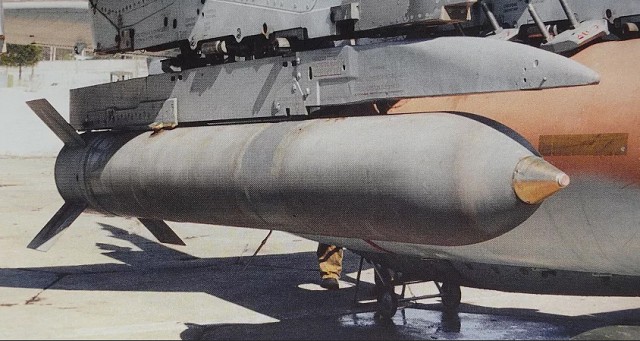
240mm S-24
The S-25 was developed as a more capable alternative to the S-24, which is of a much simpler design.
